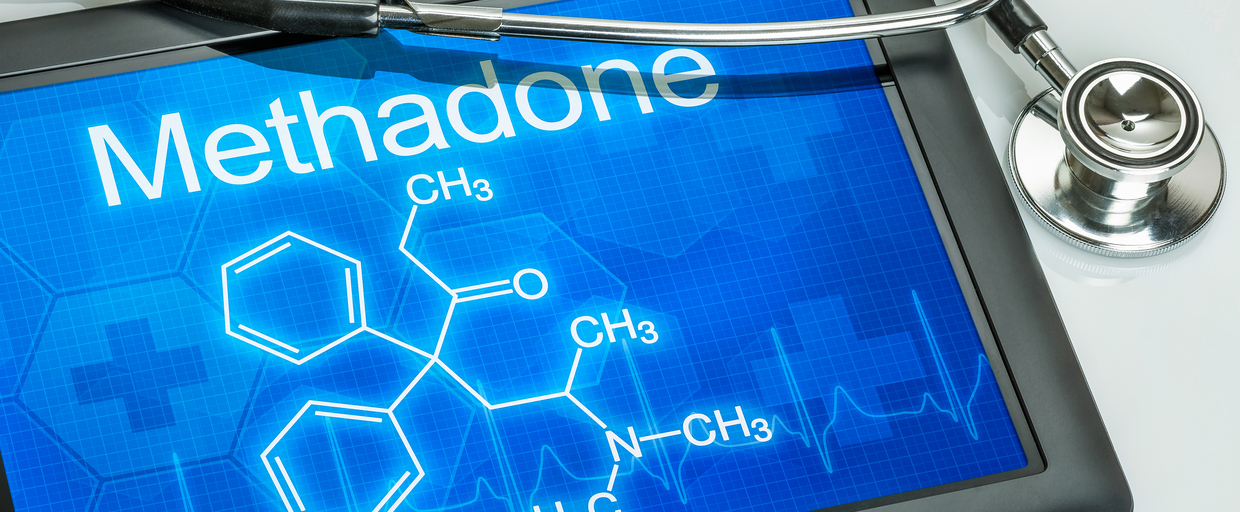The Benefits and Potential Risks of a Methadone Treatment Program

After an electrical explosion at work, Nick underwent multiple surgeries on his legs and lower back. As a means of managing the pain from his injuries, he was prescribed oxycodone.
At first, the painkillers worked as intended, but Nick soon found himself needed more to find the same relief.
Nick’s tolerance levels for oxycodone increased, and he began to doctor shop to fill multiple prescriptions. He also searched for opioids on the streets.
When he couldn’t find painkillers, Nick began substituted the pills with heroin. All too soon, Nick was one of millions who formed a opioid addiction after being prescribed opioids.
With a reported 1.6 million people struggling with an opioid use disorder in 2019, safe and effective treatment options are essential to save lives. And methadone has proven to be effective in treating opioid use disorders when used properly and combined with other forms of therapy.
However, before you or a loved one begins a methadone treatment program, it’s important to understand the benefits and risks of the (often lifesaving) medication.
Call 800-994-1867 Get Help Now - Available 24/7How Does a Methadone Treatment Program Work?
 Methadone is a long-acting synthetic analgesic drug that mimics some of the effects of morphine. By doing so, the medication helps to reduce your opioid cravings without offering the euphoric feeling associated with recreational opioid use.
Methadone is a long-acting synthetic analgesic drug that mimics some of the effects of morphine. By doing so, the medication helps to reduce your opioid cravings without offering the euphoric feeling associated with recreational opioid use.
To ensure methadone is an appropriate approach to care (and minimize any negative side effects), you’ll first undergo a medical assessment. After, a physician experienced in addiction medicine will determine a proper dosage.
The main objective of using methadone is to help you effectively manage the cravings and withdrawal symptoms of opioid dependency. To help you recover both physical and mentally from addiction, methadone is typically part of a medication-assisted treatment (MAT) plan.
During most MAT programs, you’ll be required to participate in ongoing peer support and counseling services to provide a “whole person” approach to treating your addiction.
According to prescribing guidelines, methadone is given in either liquid or pill form, usually in a single daily dose. Initial methadone dosing typically starts around 20 to 30 milligrams (mg). Doses are adjusted by your doctor as needed and are determined based on your opioid tolerance levels.
Methadone’s (Often Lifesaving) Benefits
A methadone treatment program provides a variety of benefits for individuals in recovery from opioid dependency.
- The dosage is controlled and generally only needs to be administered once a day. This significantly reduces your risk of abuse and overdose.
- Dosage scheduling can provide accountability and consistency in the early days of your treatment and recovery.
- Methadone significantly reduces the cravings to take opioids and mitigates opioid withdrawal symptoms. This will make early recovery safer and more comfortable.
- Methadone treatment decreases the likelihood of relapse, providing you with a greater chance of long-term sobriety.
- Methadone can decrease the impulsivity and reckless behavior associated with active addiction.
- Methadone treatment can eliminate intravenous drugs use, lowering your risk for contracting diseases such as hepatitis and HIV.
Methadone’s Potential Side Effects
Even with a range of long-lasting benefits, if you or a loved one are considering a methadone treatment regimen, you need to be aware of potential side effects and risks.
Mild side effects from a methadone treatment program can include constipation, difficulty urinating, stomach pain, and hot flashes. Long-term side effects can be more serious and include:
- Irregular heartbeat
- Slow/shallow breathing
- Increased anxiety and depression
- Restlessness
- Seizures
- Sexual impotence
- Damaged brain and nerve function
Potential Risks of Methadone Treatment Programs
Methadone safety is supported through extensive research backed by years of positive results. However, this has not eliminated the perceived dangers of methadone use.
Because it is an opiate, methadone is an addictive substance and carries the risk of being abused. However, this risk is lessened due to strict controls placed around methadone distribution and use.
As with other opioids, extended use of methadone can also build up tolerance levels, resulting in cravings and withdrawal symptoms.
In addition, if you combine methadone with certain medications and other substances, the danger of serious reactions such as difficulty breathing, coma, and even death is significantly increased.
The Benefits Far Outweigh the Risks of Active Addiction
 For Nick, and so many others, a methadone treatment program was the long-sought answer to overcoming his addiction to heroin and other opioids.
For Nick, and so many others, a methadone treatment program was the long-sought answer to overcoming his addiction to heroin and other opioids.
While Nick is still in need of regular methadone treatment, he is no longer dependent on street painkillers and heroin. And with fentanyl-laced drugs on the rise, Nick’s risk of overdosing would’ve never been higher if he was still in active addiction.
Instead, he has a great job as an electrician and lives comfortably in a small apartment with his mastiff, Bella.
For more information about methadone safety and to find out if medication-assisted treatment is right for you, call 800-994-1867Who Answers? today.